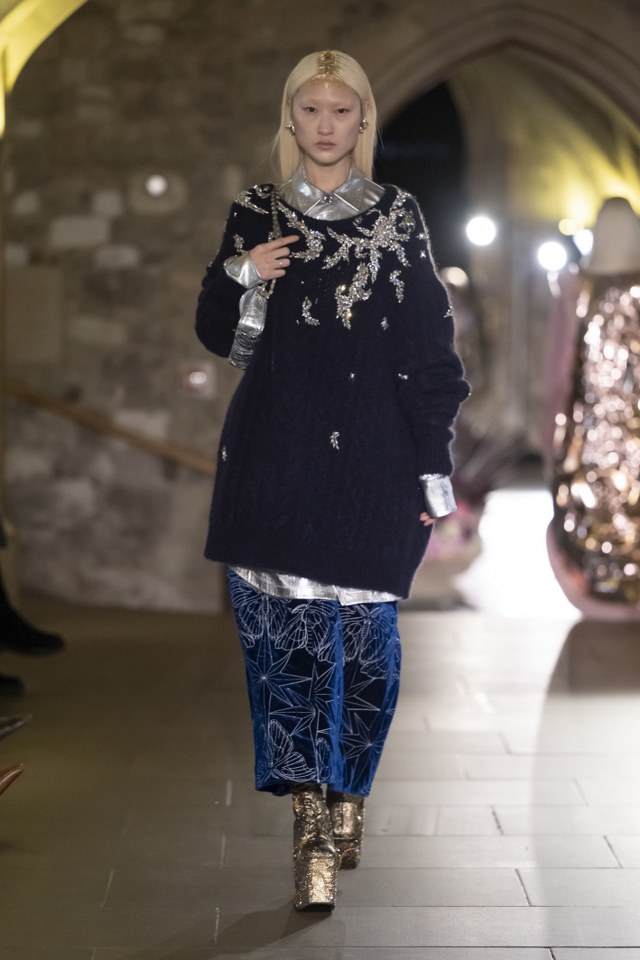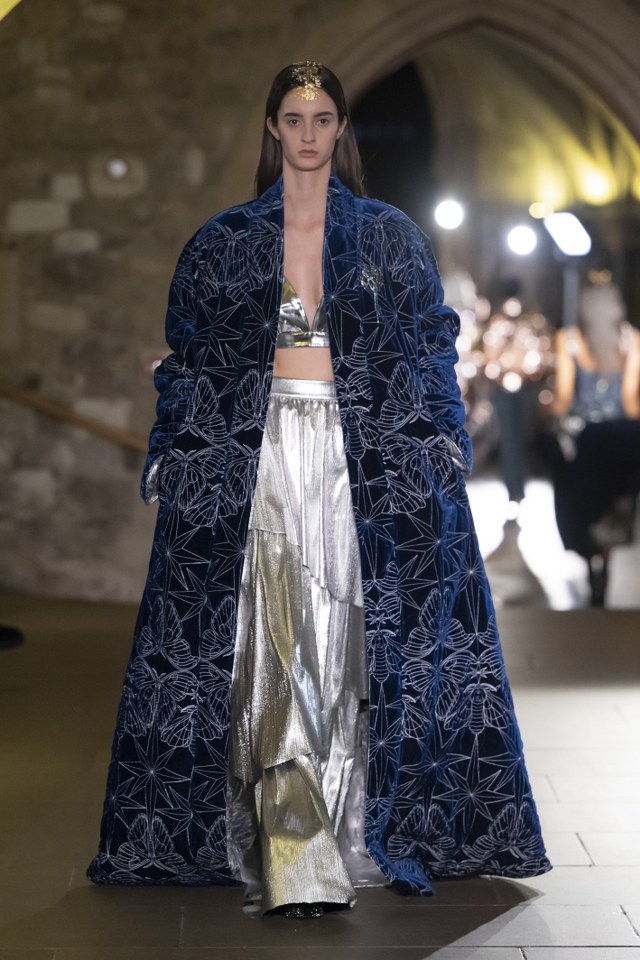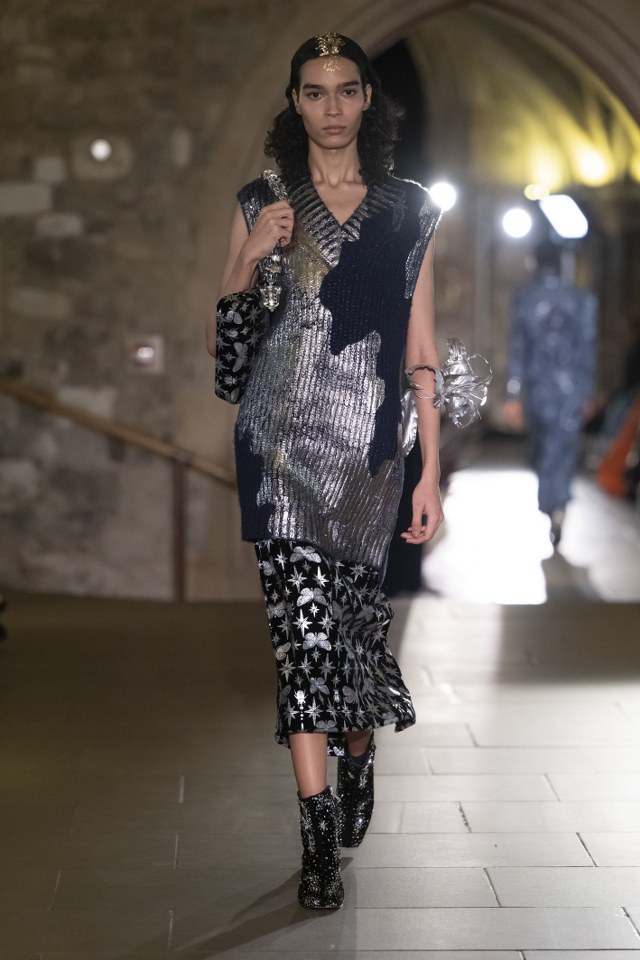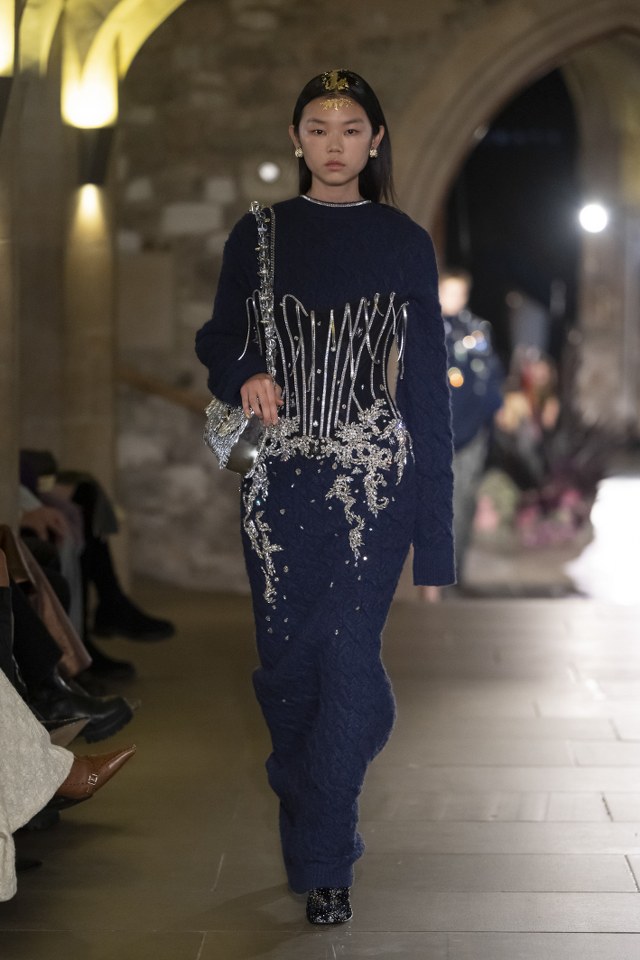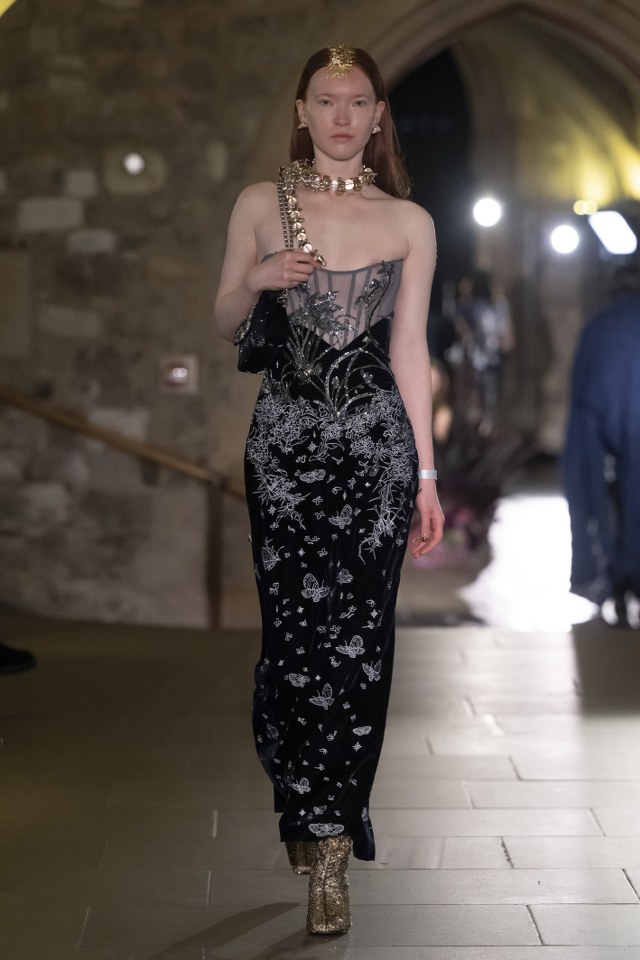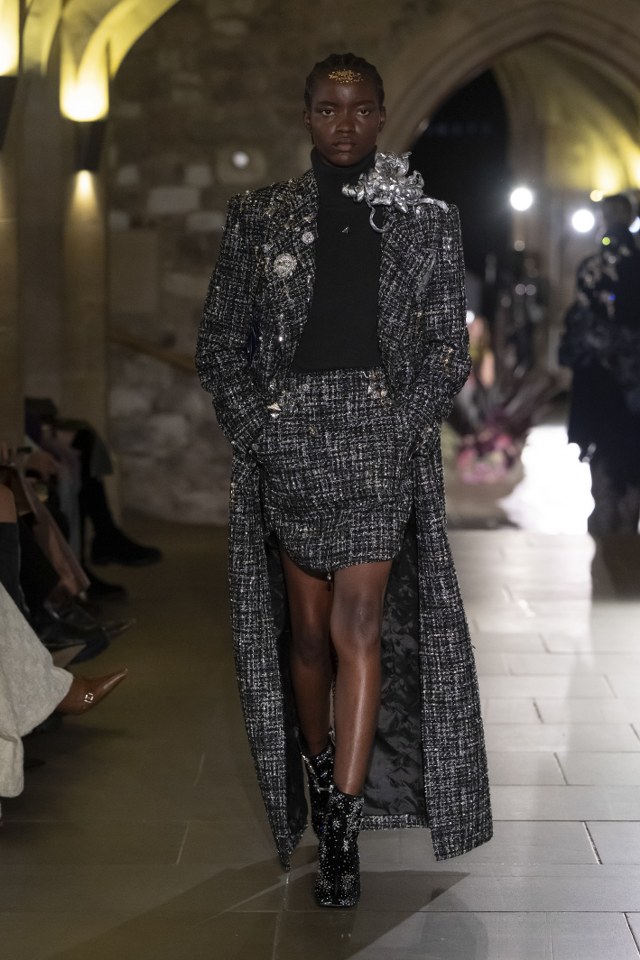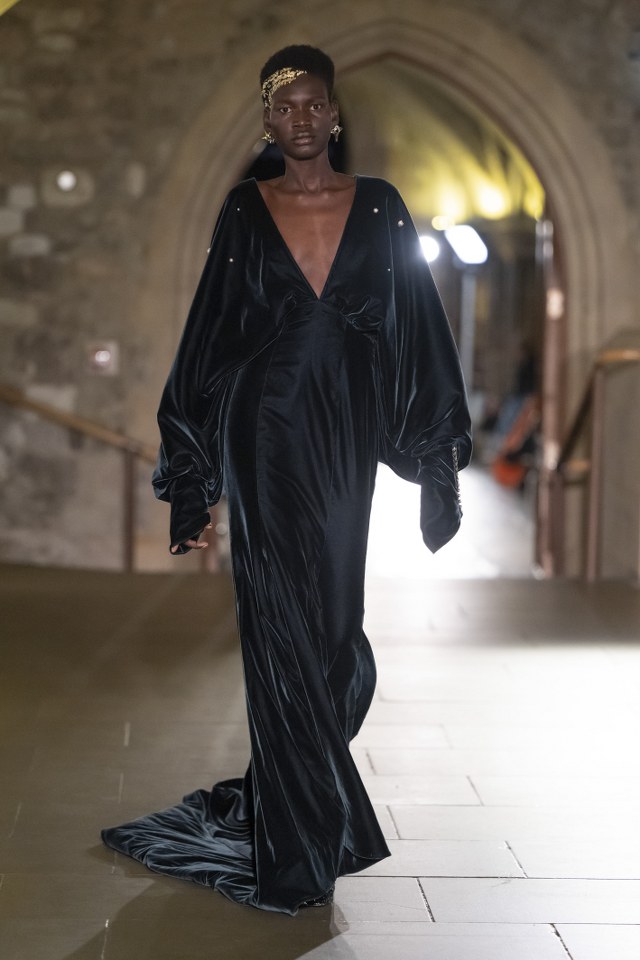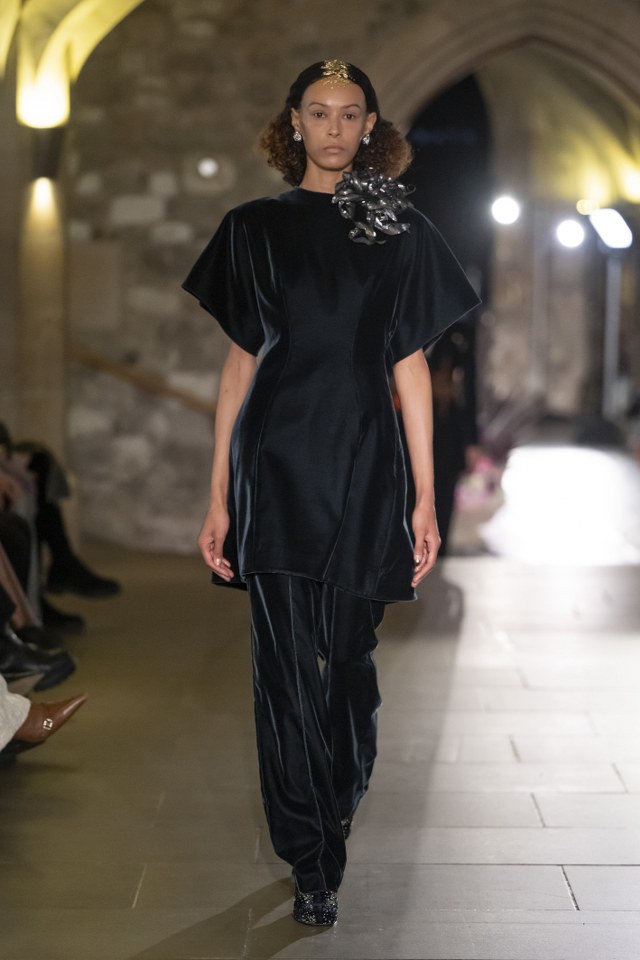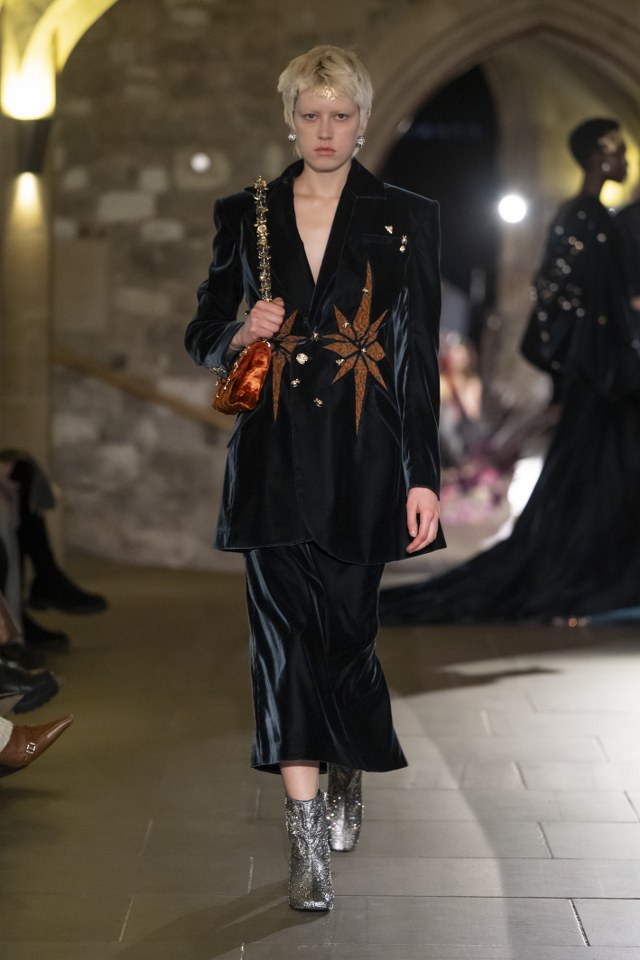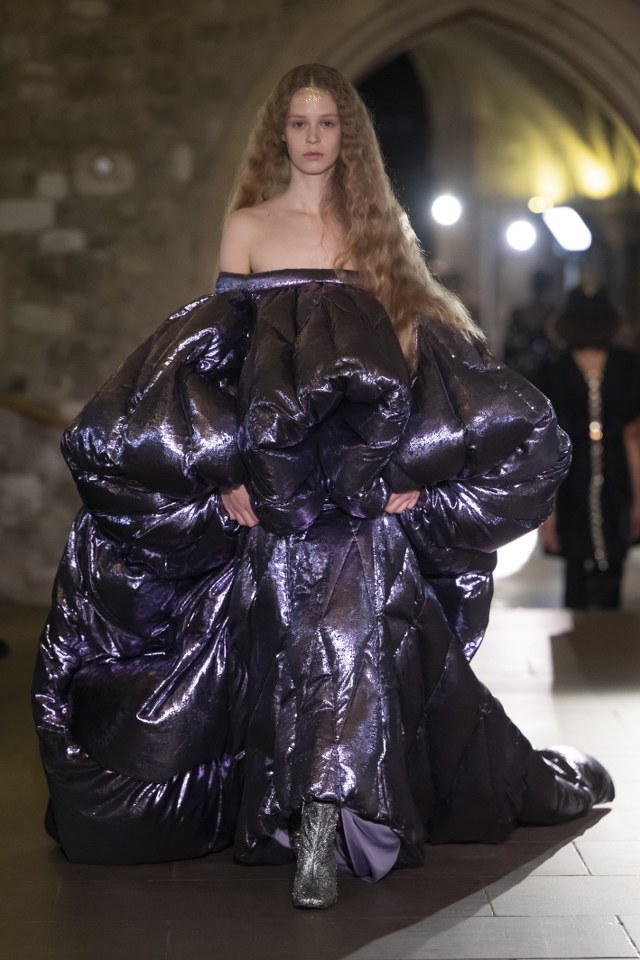Text by Brian James & Photos by Jason Lloyd Evans
Designer and Creative Director Demon Zhang’s luxury brand Mithridate is suffused with a design aesthetic that’s been informed by the designer’s experiences of growing up in the Yunnan and Guangdong provinces of China before moving to London where they studied at Central Saint Martins and worked for industry icons Alexander McQueen and John Galliano.
This fusion of Eastern and Western influences manifests itself in timeless pieces of standout sophistication. Clothes designed to dazzle, that are imbued with high-octane glamour and edgy elegance. Exciting and exceptional clothes which are created with a meticulous attention to the quality of craftsmanship.
When February’s London Fashion Week schedule was announced, the Mithridate A/W 24 collection was a Flanelle “must see” that didn’t disappoint. Held in the achingly atmospheric Guildhall crypt we witnessed a collection of stunning beauty which enthralled a packed audience that included Mae Muller, Kelly Rutherford and Andrew Scott.
When the London Fashion Week dust had settled, Flanelle sat down with Demon to ask about their creative vision, the influences that have shaped the brands fashion philosophy, and their ambitions and aspirations.
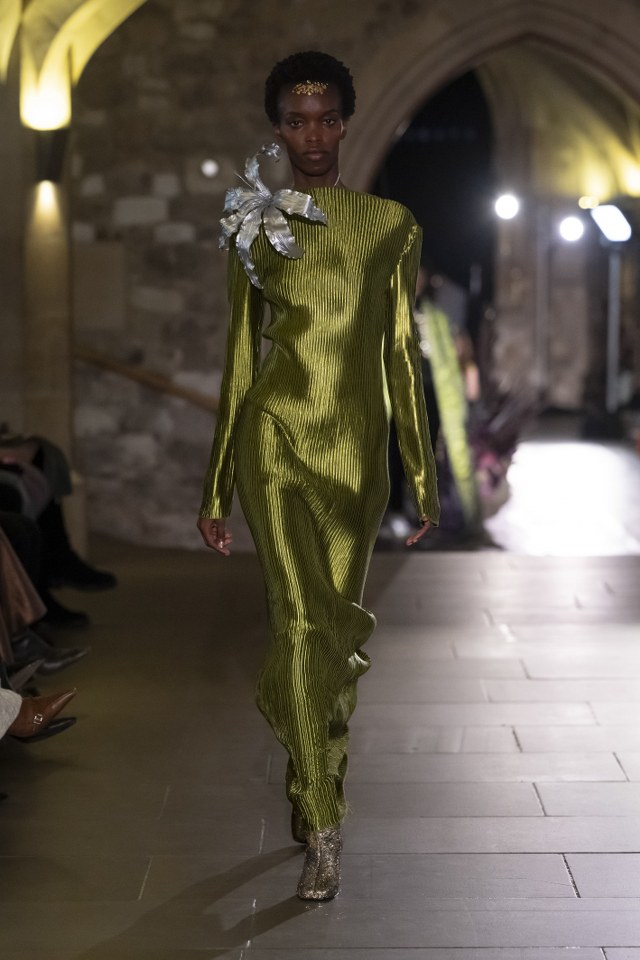
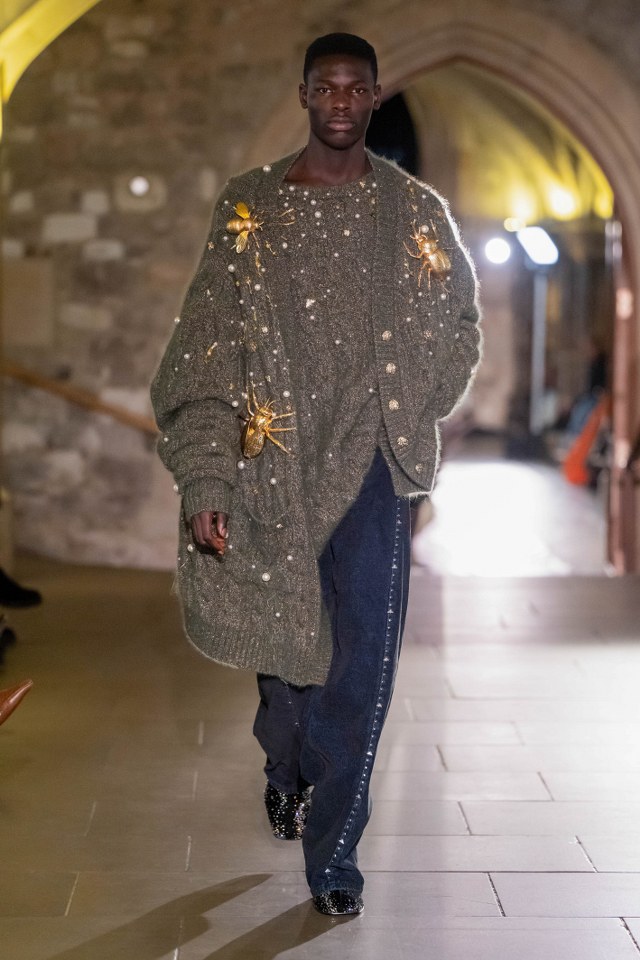
Congratulations on your A/W 24 collection “Vita Aeterna” which is Latin for “Eternal Life”. What message did you want that highly evocative title to convey to us?
MITHRIDATE 2024 Autumn/Winter Collection, “Vita Aeterna: Beyond the Mundane,” is an exploration of “fate and order.” As everyone knows, fate is full of uncertainty, yet it is constantly guided by natural order. There is a Latin phrase called “memento mori,” reminding us that mortals will eventually die. Life and death are the most fundamental order in the world we inhabit, serving as both destiny and the foundation for human thought and judgment.
In this season’s designs, I have selected natural elements such as cypress, beetles, coral, bees, and lingzhi mushrooms, along with patchwork designs inspired by moths, to create juxtaposed textures, simulating human body forms such as the brain, heart, and spine, as a metaphor for the imagery of the human body, nature, and life; the use of color and fabric combines absurdity with darkness, incorporating tones of branch brown, moss green, coral red, midnight blue, metallic hues, creating visually striking contrasts on velvet and leather, overlapping to produce dramatic textures.
We divided the collection into three main themes to explore this topic—Time, Identity, and Fant. The last chapter, “Fant,” is a term derived from Fantasy and Fate. Fate is both predetermined and filled with unknown fantasies.

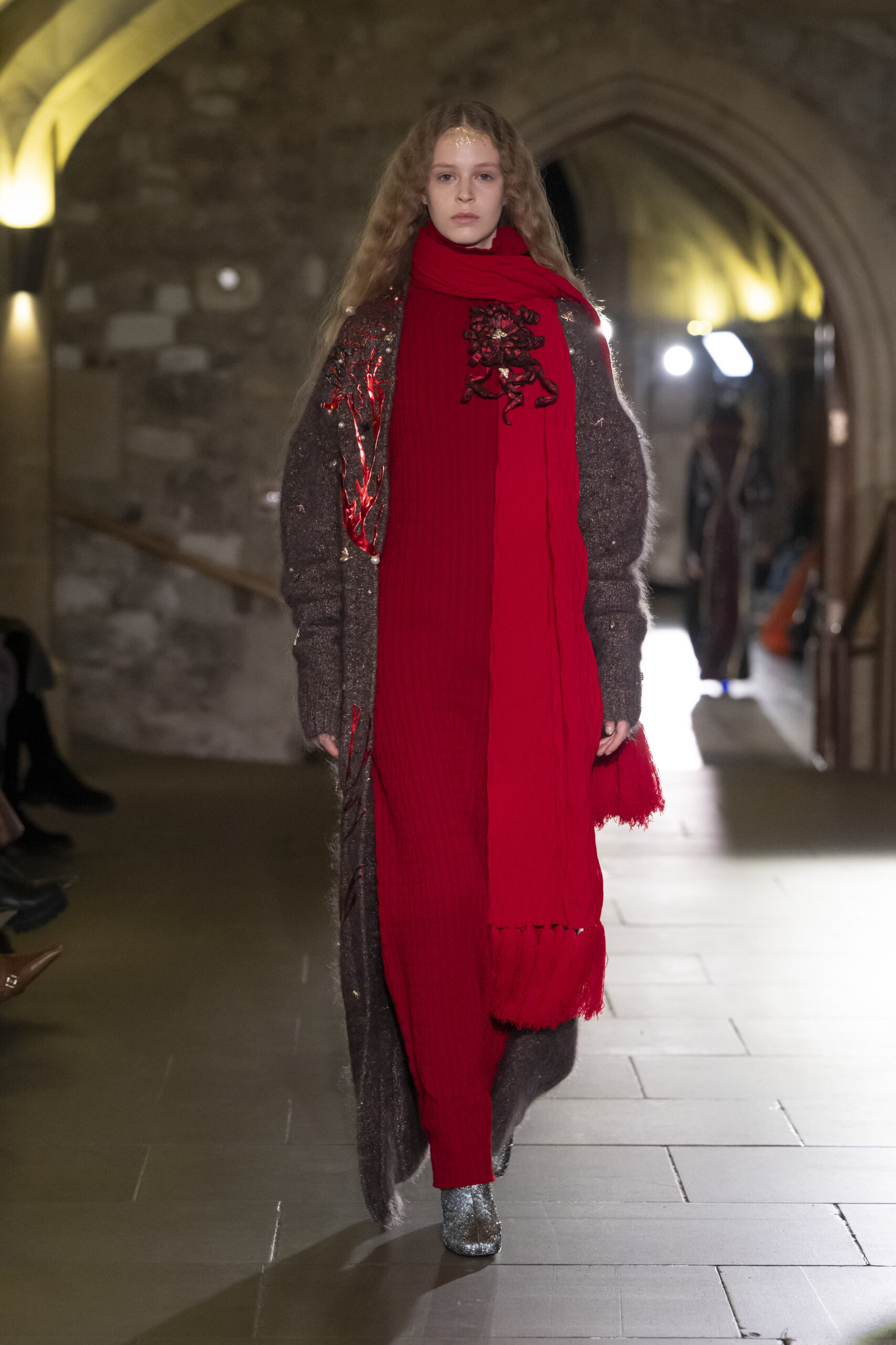
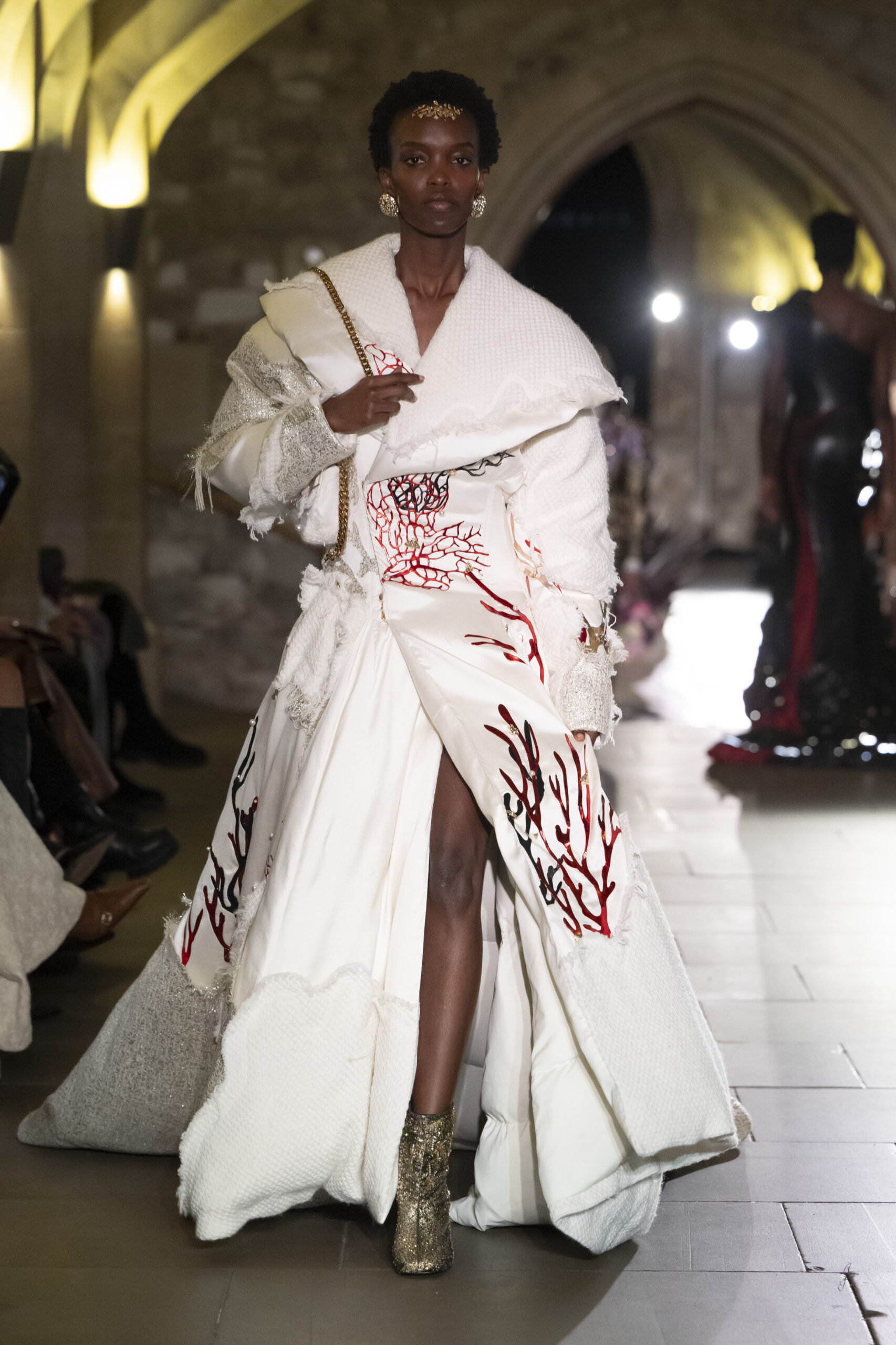
We loved the richness of the fabrics and the sumptuous colour palette. What influences and inspirations did you draw from to create the collection?
This season, I will continue to seek inspiration from many elements of the natural world. Because the theme involves the topic of the life cycle, my team and I have delved into many ancient animals and plants. Especially those that bear resemblance to the human body in form and provide great inspiration for our lives. These animals and plants conceal immense energy within their bodies, reproducing and surviving in soil, air, and seawater, circulating through time. There are many arcane forces hidden within them that fascinate me.
For example, in this season, the imagery of cypress is ubiquitous. The colors, silhouettes (curled hems), and textures seem to derive from cypress. The brand’s classic elements, beetles and moths, crawl over various silhouettes, coats, dresses, and knits.
“More is more” is very much a Mithridate mantra. How did you want that to manifest itself in this collection?
MITHRIDATE’s “More is more” often manifests itself in creating highly dramatic, emotionally intense moments through clothing. These moments are filled with color, lines, textures, and patterns.
For example, this season I continue MITHRIDATE’s exploration of “light.” We incorporated optical fibers beneath intricate patterns carved into glossy eco-leather, allowing relief-like metal flowers to shimmer with a faint glow in the relatively dim underground runway.
We also attempt to create parallels and intertextuality between natural imagery and the human body, daringly attempting to reconstruct the order of life. Coral and lingzhi mushrooms evolve into the human heart, while the hidden bones beneath the human body are manifested as exposed moth spines, creating a very tangible visual impact. These symbolic representations of life are transformed into three-dimensional decorative elements on clothing, symbolizing the coexistence and cohabitation of humans and nature.
The LFW venue and ambience perfectly complimented the clothes. How important is that holistic approach to location, music and atmosphere when showcasing your work?
Yes, actually during the process of selecting the venue, my team and I had multiple discussions. From the beginning, we wanted to choose an underground basement as the venue for the runway show, to emphasize the mysterious and profound atmosphere of the autumn/winter design theme. Later, our production team narrowed down two potential venues for us: one was a contemporary basement with Bauhaus-style architecture, and the other was the venue we ultimately chose for the show. Originally, everyone would have preferred the first one because it was more spacious, had better facilities, and smoother logistics. However, when everyone arrived at Guild Hall, the chosen basement venue, they all felt a sense of awe, spontaneously.
I think this moment can answer the question—a well-suited venue, combined with precise lighting and music, can quickly immerse the guests in a special atmosphere. This expression is effective. Fashion ultimately is a visual language, and we tell stories through the design of sensory experiences.



It was a show that attracted a host of celebrities including Mae Muller, Kelly Rutherford and Andrew Scott. How gratifying is it to receive that celebrity endorsement and how do you want all of us who wear Mithridate to feel about ourselves when we wear your clothes?
What I often want to express is that clothes cannot exist without the people who wear them. My work is only the first part—when the designer conceives and creates the garment, my task is complete. The next part and the final outcome are completed by the person who chooses to wear the garment. This is a co-creation between me and the wearer.
Of course, I hope that everyone wearing MITHRIDATE can feel comfortable and empowered. I often express that it’s “people wearing clothes,” not “clothes wearing people.” Fashion is meant to serve the wearer. It should not distort the body or create an artificial atmosphere. Instead, it should be a tool for the wearer to convey confidence, imagination, and courage. I am also very grateful to the friends who chose MITHRIDATE this time; we had a very enjoyable creative process together.
You studied at CSM and assisted Alexander McQueen and John Galliano before founding Mithridate. What did you learn from those experiences and how did that prepare you for launching the brand?
The reason why my designs are unique is because my experiences are unique (I believe everyone is unique). I sincerely and openly pour all my questions, things I love, and unattainable dreams into the work itself. During my time at CSM, a teacher once assigned a design project on “identity,” using design to present the concept of identity. I saw my classmates approaching and expressing this theme from completely different perspectives. I realized that the concept of “identity” is not just a string of numbers and a piece of identification; everyone’s understanding of “identity” can vary greatly. Therefore, in my somewhat bewildered state at the time, despite putting a lot of effort into thinking, the process of completing this project felt like London’s weather—sometimes clear, sometimes foggy. Now, with the accumulation of age, experience, and knowledge, I believe I am still constantly providing new insights and answers in various ways.
My experiences working with McQueen and John Galliano gave me very direct experience about “how designers work.” In a mature brand, designers usually do not work alone; they need to collaborate very closely with their design assistants, dyeing studios, and colleagues in the workshops.
Mithridate is a fusion of Eastern and Western influences. What have you taken from both those cultures to create the brand’s identity?
I was born in Yunnan, grew up in Guangdong, pursued my studies and got my first job in London. Because of these experiences of moving and traveling, I have become a blend of various cultures. The unique flora and fauna, climates, foods, languages, and cultures of these cities have become an endless source of inspiration for me and a subject of research that I will never exhaust.
The dictionary definition of Mithridate is a semi-mystical remedy. What inspired you to name the brand thus and how important are those semi-mystical properties to your creative vision?
The name “MITHRIDATE” once belonged to a king of Anatolia. He claimed to possess a panacea, an antidote to all poisons. Millennia later, archaeologists confirmed that his so-called ‘panacea’ was actually a mixture of salt, bay leaves, olive oil, and honey, with nothing special about it. However, in history, he indeed survived many assassination attempts and poisonings, each time miraculously.
This story feels particularly intriguing and symbolic to me. Nowadays, people no longer believe in a single potion that can cure all diseases, and the establishment of MITHRIDATE hopes to express a rebellious belief: that life has its “medicine,” and this antidote consists of only one ingredient—clarity of self. This is also my understanding of fashion: it’s an attitude, a weapon, a declaration of action. Just like the moth, symbolizing ‘warrior,’ it seeks light, flies into it, gets burned by it, and becomes light itself. Everyone is searching for themselves, realizing themselves, and ultimately, the flames burning around them will attract and illuminate more like-minded peers.
Your creations are made with a meticulous and exceptional level of craftsmanship. What is the process involved in creating a piece from initial inception to reaching the runway?
Generally, I start planning the theme and concept for the next season’s design and production from the middle to later stages of the previous season. Finding the theme… often happens during various distractions (haha). Because when I’m being pressured to work on assignments (like designing a collection), a rebellious feeling arises in my heart, wanting to break free from the tasks at hand and do something else fun (which is essentially digging myself into a new hole). Another reason is that by the later stages of the current season, most of the time is spent on executing the designs on the ground, so even though my hands aren’t idle, my mind is, and I start to think about trying something new.
If we count from the very beginning, the span is quite long, from conceptualization to delivering the entire collection, it takes about a full six months.
The most stressful times are probably when dealing with third-party suppliers. Because our team often comes up with many great ideas and hopes to find good samples and techniques to realize these creative ideas. But sometimes, to get a satisfactory sample (such as original printed fabrics or a new style of buttons), experiment with new materials and production techniques, it requires repeated explanations, adjustments, and negotiations back and forth. Watching time tick away, it can be nerve-wracking. And both parties, whether it’s the supplier or our team, feel some pain in this process… But at the same time, we know we have to do it this way…
What are your goals and aspirations for Mithridate for 2024 and beyond?
I hope to collaborate with more outstanding artists, including photographers, stylists, playwrights, and stage performers. I hope to involve MITHRIDATE in more interesting projects to inject fresh blood and vitality into our brand.
The Mithridate philosophy of “More is More” is one that’s been envisioned with stunning synchronicity across a series of outstanding collections since the brand’s inception. With Demon the devil is in the detail and the latest collection “Vita Aeterna: Beyond the Mundane,” demonstrates a designer who continues to define and refine an aesthetic which places them both under the radar and in the know. It’s a collection that explores the phenomenon of fate and we’re happy that we were fated to share their story with the Flanelle readers.
Many thanks to Demon for taking the time to speak to Flanelle and to Juliet and all at CP Concept.
You can connect with the brand on their website and on Instagram.



